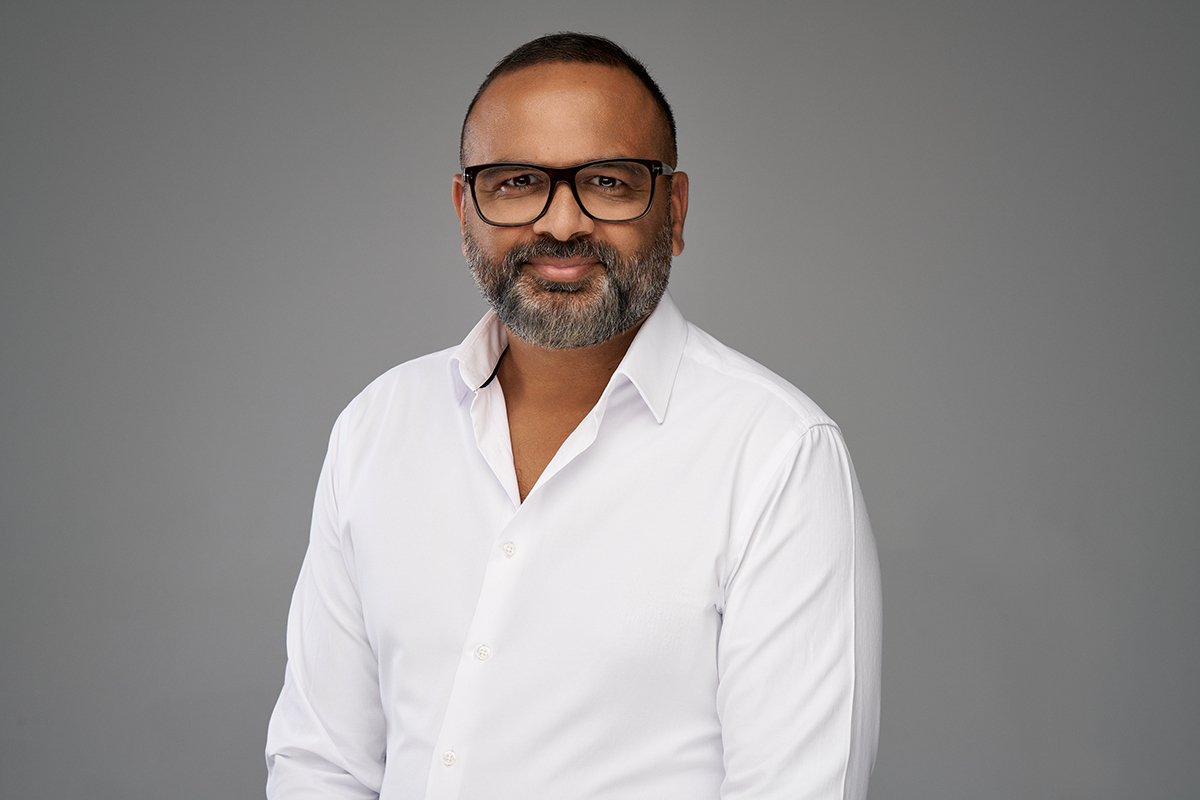Getting Creative With Corporate Portraits
Yvens B gets down to business with his Tamron 70-180mm F2.8 VC G2 telephoto zoom lens.
Share the article:
More Photo Tips | Video Gallery | Photo Gallery | Enewsletter sign-up
By Jenn Gidman
Images by Yvens B
By day, Yvens B used to toil as a CPA, crunching numbers and producing music videos as a side hustle with a director friend. When that friend left Canada to pursue career opportunities in the US, Yvens found himself left with a camera, as well as a newfound appreciation for creating images.
“In 2020, I transitioned to taking pictures full time, specializing in sports and fitness, activewear, and portraits,” he says. “My analytical background complements my photography, since my approach is very data-driven. But what I appreciate most about portrait photography, and what I didn’t get from being a CPA, is the opportunity to get to know people and their stories, and then try to convey the essence of who they are through my portraits.”
Yvens’ gear bag includes the Tamron 70-180mm F/2.8 Di III VC VXD G2 for his Sony mirrorless system, a lightweight, compact telephoto zoom that offers him the versatility he needs to capture sharp, crisp portraits. “I’ve been a huge fan of the 70-180mm lens for years,” he says. “I was excited to recently try the G2 version. The F2.8 minimum aperture works especially well in office environments when I want to blur out distracting background elements, and the Vibration Compensation offers me extra insurance that camera shake won’t ruin my images. This came in handy recently when I was standing on a ladder to photograph an athlete for Under Armour. I wasn’t on stable ground, and the VC was key.”
Yvens appreciates the learning process he undergoes each time he takes a corporate portrait. “Some may find it boring, but the repetitiveness of taking these types of pictures enhances my creativity,” he says. “The constraints I often have in place, based on the client’s needs, force me to find new ways within those constraints to come up with portraits that everyone will be satisfied with.”
YVENS’ QUICK TIPS
Use lighting to control contrast and color.
I rely on supplemental lighting for about 90% of my portrait work. It’s a key part of my storytelling process. My primary light source is a feathered boom light that’s usually 35 inches or larger, meaning it doesn't directly hit the subject's face but hovers around it. This technique is particularly useful for subjects wearing glasses, as it minimizes glare and creates a soft, flattering effect.
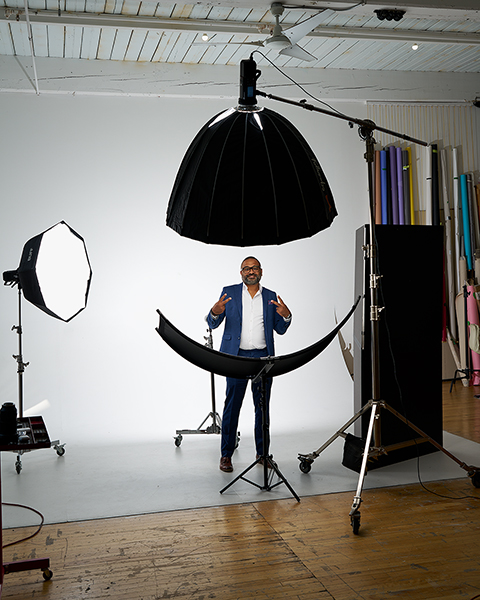
Click image to view larger
I also use a kicker light to separate the subject from the background, adding a degree of depth and preventing them from blending in with that background. I’ll position a V-flat—a large, portable piece of foam board—on one side of the subject, preventing the image from appearing too flat. I’ll adjust this lighting setup accordingly, depending on the background color.
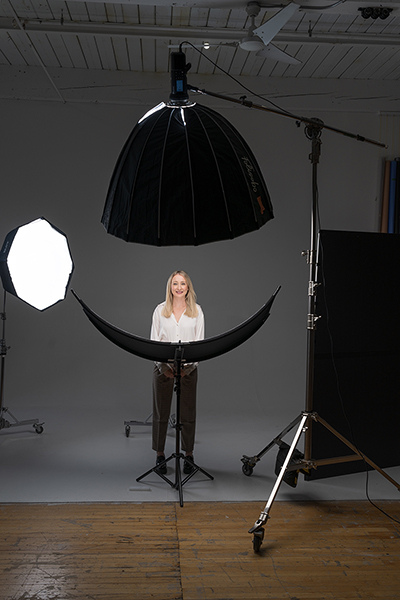
Click image to view larger
Take advantage of available lighting when you’re on location.
I’m not completely tethered to artificial lighting sources. When natural light is abundant, such as during a shoot at an office with large windows, I’ll shoot with the window behind me when possible to ensure a distraction-free background. That’s also when I’ll tend to shoot at the lower aperture levels, like F2.8, to achieve a more shallow depth-of-field to take the focus off of other elements in the office. If I want a portrait that’s more contextual, I’ll adjust to F5.6, F7.1, or F8. I’ll use that kicker light again to accentuate the environment, as well as a reflector under the subject's eyes to balance lighting and facilitate editing.
Tailor your angles to each individual.
There’s no “one size fits all” when it comes to capturing flattering perspectives for corporate portraits. For female subjects, maintaining eye level is generally a solid practice, but being flexible for their comfort is essential. If someone has specific body-image concerns, for example, subtly elevating the camera angle can help without resorting to heavy post-processing. For male subjects in corporate portraits, sticking to eye level is also typically the norm. However, if you’re aiming to convey a sense of power or dominance, use a slight upward angle, shooting at around 20% below eye level.
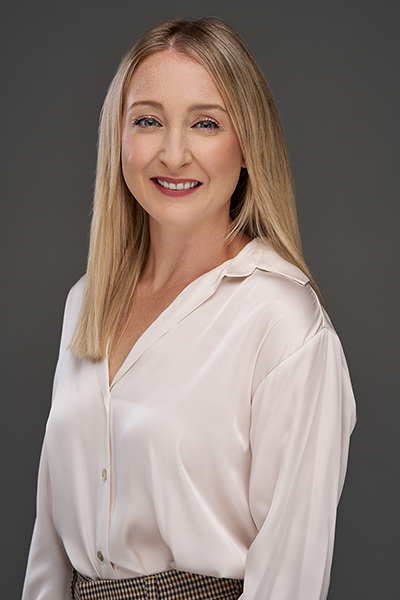
70-180mm (117mm), F8, 1/200 sec., ISO 100
Click image to view larger
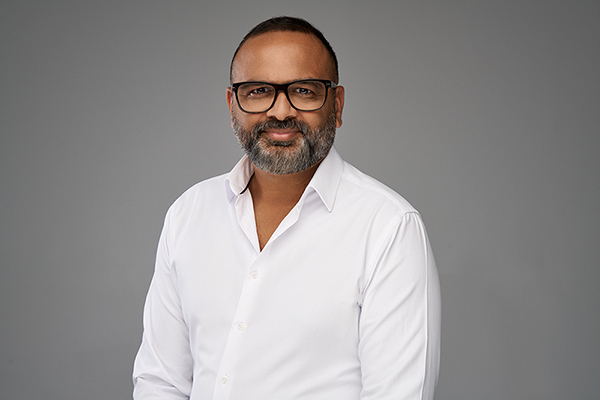
70-180mm (90mm), F7.1, 1/200 sec., ISO 100
Click image to view larger
Help your subjects be themselves.
The key to achieving authentic poses lies in observing and interacting with your subjects. Take a few minutes before the session to engage in conversation, which helps you gauge your subject’s personality and mannerisms. This preliminary understanding will help you direct them effectively during the shoot.
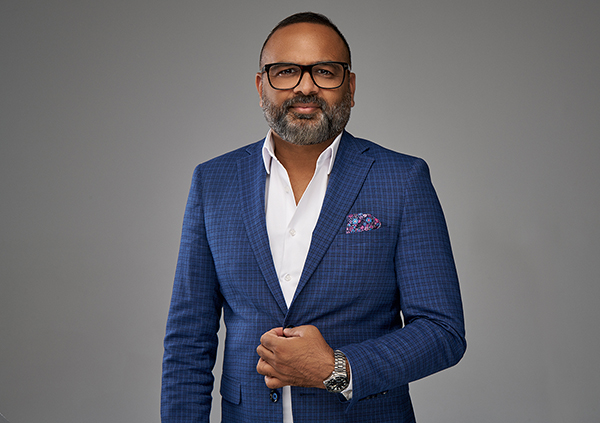
70-180mm, F7.1, 1/200 sec., ISO 100
Click image to view larger
Additionally, having a catalog of go-to poses in your mind or on your computer can be a handy reference during the shoot. You can suggest specific gestures that suit the individual's style. I also encourage my subjects to take deep belly breaths, which can relax their shoulders and promote a more natural posture.
To see more of Yvens B’s work, check out his website and Instagram.
Is your Tamron News subscription up to date? Click to subscribe to all editions of Tamron News featuring how-to tips, new product news, contest announcements and inspiration!
More Photo Tips | Watch Videos | Learn More About Tamron Lenses | Photo Gallery
